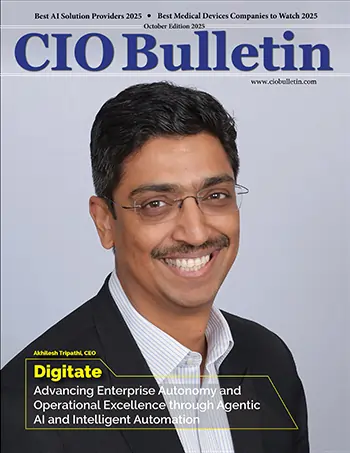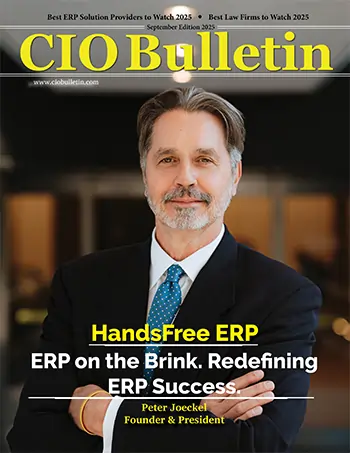50 Most Admired Companies to Watch 2023
CIO Bulletin
Processors, accelerators, and high-performance, intelligent multi-homed high density memories are being rethought by Abacus Semiconductor Corporation for use in all HPC applications, including classical HPC, AI (including generative AI like GPT), Big Data, and in-memory databases.
Abacus Semiconductor Corporation is creating a line of processors, accelerators and smart multi-homed high-performance, high-density memory subsystems.
Abacus Semiconductor Corporation's headquarters are on the Peninsula, close to Silicon Valley and San Francisco's burgeoning startup environment. From these locations, the company has access to the best research, technology, people, and clients in the world. The business will be situated on North First Street in San Jose, California. For the purpose of designing analog ASIC components, firmware, and customizing Abacus Semiconductor Corporation’s Operating System as well as APIs and applications for European customers, they created an office in Germany.
Abacus Semiconductor Corporation is relying on the fabless model since it allows to separate between the design and engineering of a chip and the manufacture of that chip. While the design and engineering of a chip can cost between $20M and $300M, building a fabrication facility (or in short, fab) can cost upwards of $12B.
Further discussion with Axel Kloth, Founder, reveals what Abacus Semiconductor Corporation is all about
Q. What is Abacus Semiconductor Corporation, and what does it do?
Abacus Semiconductor Corporation is a fabless semiconductor company that designs and engineers processors, accelerators and smart multi-homed memories for use in supercomputers and in the backend for Artificial Intelligence and Machine Learning (think ChatGPT and GPT-4) as well as traditional High Performance Compute (HPC) applications.
Q. That sounds impressive. Do you have a plain English translation for that?
Sure we do. The semiconductor industry has largely split into two parts. One part is designing and engineering components, and the other part is manufacturing them. There are very few remaining vertically integrated parts of it that design, engineer and manufacture semiconductors. Those are for the most part Intel, Samsung and the memory manufacturers, and the specialized mixed-signal and analog component companies. AMD, Apple, Qualcomm and Broadcom as well as Nvidia are all fabless, like we are. They all design and engineer solutions to different computational problems. Apple designs processors and certain supporting chips for their phones and tablets and computers. Nvidia designs and engineers graphics processing units (GPUs) for graphics cards particularly for gaming and general-purpose graphics processing units (GPGPUs) for High Performance Compute (HPC) and crypto mining. AMD designs both Central Processing Units (CPUs) and GPUs, and a contract manufacturer is manufacturing them. The same is true for us. We design and engineer our products here in the US with a local team, and we bring back the resources to the US that over time have all migrated away and destroyed institutional knowledge in the US. We have contracted with the leading contract manufacturer to manufacture our chips here in the US as soon as we are done with the design and have created a blueprint.
Q. That sounds interesting too, but what is the market that you are targeting?
We are targeting everything that is computationally intensive. You want tomorrow’s weather forecast tonight? That requires a supercomputer. You want your car to be designed such that if you get into an accident, you and your passengers survive, even if the car is all crumpled up? There requires a supercomputer. You need to fly much, but would like to pay less? That means that your airline has to buy aircraft that are using very little fuel per passenger per unit distance covered, which in turn means that the aircraft and propulsion system manufacturer needs to do some serious multiphysics simulations – and they require supercomputers. You run a Google search, and the very vast majority of the work is done not on your computer or cell phone, but in the Google backend. Any of your searches will involve 3 to 20 servers in Google’s backend – and things take a turn for the worse if you use Generative AI such as ChatGPT. It uses 100 to 1000 times as much compute in the backend. You might get the gist – pretty much everything and anything needs a lot of compute to optimize. Today’s processors are pretty great, but supercomputers made from them are not. We fix that. Why? Because computational demands will continue to rise, but we cannot afford to have an equivalent increase in the electric energy it takes to make it all tick.
Q. So what you are saying is that today’s processors are great for the use in the cloud and on premises, but not for HPC?
Yes, that is largely correct. Today’s processors – even those intended for servers – work great for as long as the computational needs can be fulfilled with one or two processors, in one, two or possible four servers on premises, and rows of racks in data centers. However, data centers and “the cloud” might house 100,000 servers, but they serve 1 million users or more. HPC and AI run one application to completion for one user, so the demands (“computational requirements or workloads”) are very different. For AI and for traditional HPC, current processors don’t work well. They might shine in performance tests, also called benchmarks, but these are hypothetical workloads that have nothing to do with real-life applications that HPC and AI users need to run. Even the system integrators and manufacturers of supercomputers will tell you that the efficiency is very low. Oftentimes, you’ll find that a supercomputer consisting of 100,000 servers performs maybe 5,000 times as fast as a single server in real-life HPC or AI applications. In other words, the performance of 95,000 servers is wasted due to outdated system architecture. That is a waste of time, money and energy. That is the part that we fix.
Q. In other words, your target is HPC and AI?
That is correct. We do not think that we need to compete with Intel, AMD, ARM or any of the established players. The HPC Semiconductor Total Addressable Market (TAM) is going to be $5B in 2023, with a 20% Compound Annual Growth Rate (CAGR). We can focus only on the growth part, which is going to be $1B next year, not take anything away from the incumbents, and still be on a tremendous growth path. We do not need to focus on data centers or on the standard server that’s being sold into on-premises local data centers. While there is a certain effort to replace Intel and AMD (the x86-64 Instruction Set Architecture or ISA) with lower-cost ARM processors in the cloud, this is only possible for applications that run on the LAMP stack – the Linux/Apache/MySQL/PHP stack that runs allegedly 78% of all Internet traffic. This would be the set of applications that run web sites, email services, messenger services and social media applications, but because of the LAMP stack they are independent of the processor ISA. We can and at some point in time will address this, but right now we’ll let the x86-64 versus ARM wars come to a conclusion, and then we’ll take on the winner to compete with them on LAMP. There is no need for us to get involved in that kind of a bloodbath.
Axel Kloth- Founder
The Founder – Axel Kloth – is a physicist and computer scientist by training, and he has been both using supercomputers and developing for them for over 3 decades. He knows what is working, and what is not from personal experience. Over time he learned that in order to build a team, he needs to attract people in the Executive Management Team that complement his abilities. That means not to replicate strengths, but to hire to cover each other’s weaknesses. He also learned that while it is important to get stuff done, critical thinking must not be extinguished, and that engineers need to be able to have the freedom to implement what has been agreed upon in any way, for or shape that they like.







